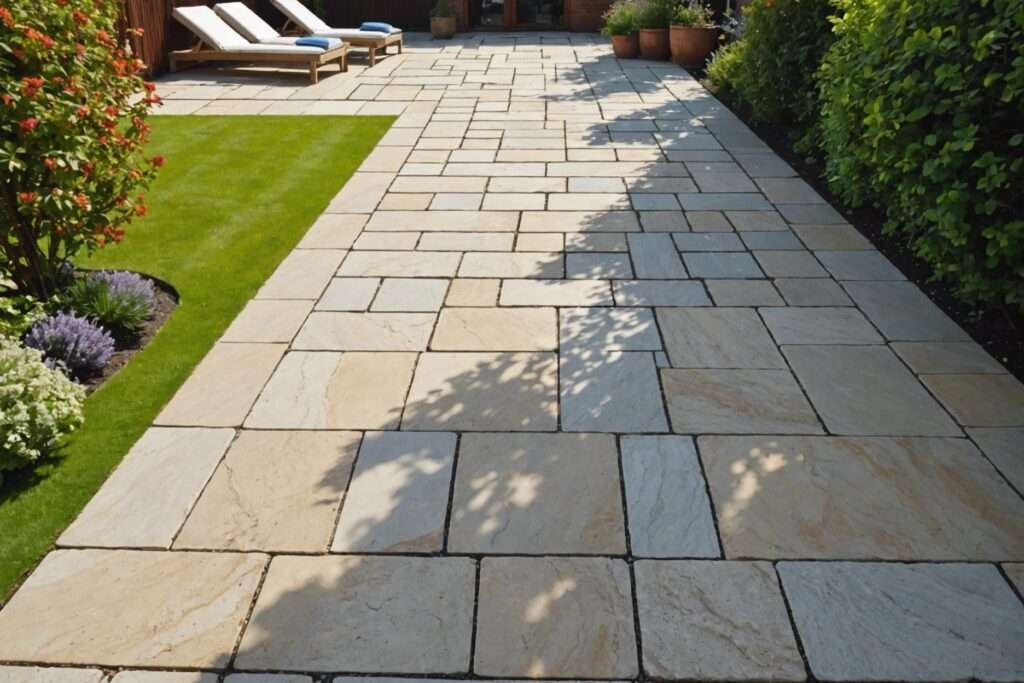
Understanding the Durability of Granite and Sandstone Paving
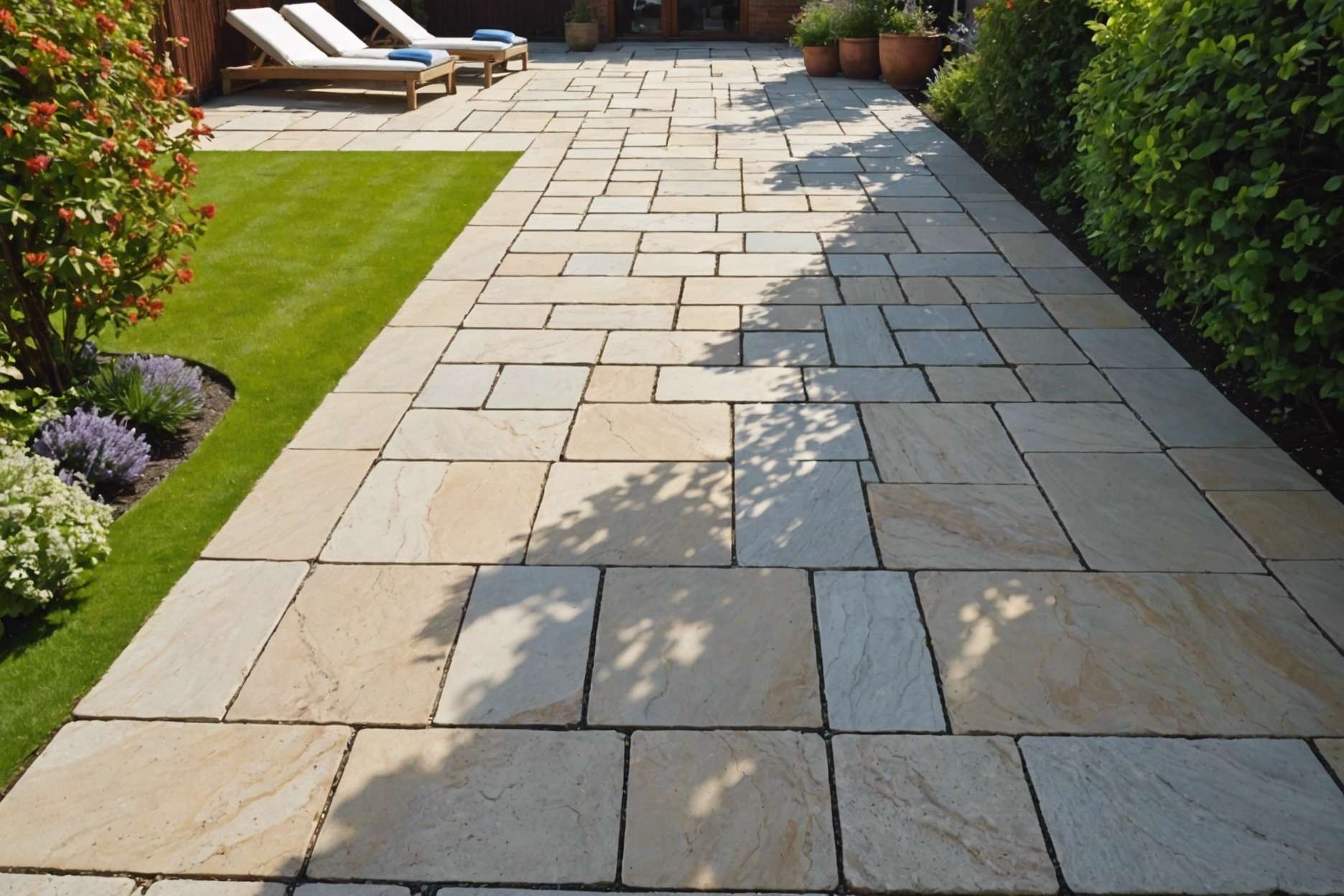
Granite paving is highly durable, resisting scratches, stains, and heavy traffic, making it ideal for areas needing longevity and minimal maintenance. Sandstone, while offering a unique aesthetic, is more porous and susceptible to weathering, requiring regular sealing and careful maintenance in wet climates.
Introduction to Granite and Sandstone Paving
Granite and sandstone are popular choices for paving due to their durability and aesthetic appeal. Here’s a brief overview:
- Granite: This igneous rock is known for its toughness, made up of quartz and orthoclase. It’s typically cut with high-density machines because of its hard nature. Granite is highly durable, resistant to wear, and available in various colors. It’s perfect for areas with high foot traffic but can be heavy and difficult to handle.
- Sandstone: A sedimentary rock that varies in color and type, including Kandla grey, Rippon buff, Autumn brown, and Raj green. Sandstone has a natural cleft which can be manually split, making it easier to work with than granite. It’s finished with a natural split to enhance durability and resist easy cracking. Some types like Rainbow and Teakwood can be honed for a smoother finish.
- Choosing between Granite and Sandstone: The choice depends on the project’s specific needs. Granite offers longevity and robustness, ideal for busy environments. Sandstone provides a natural look with easier handling and a variety of color options. Both materials are environmentally friendly and maintain their quality with minimal upkeep.
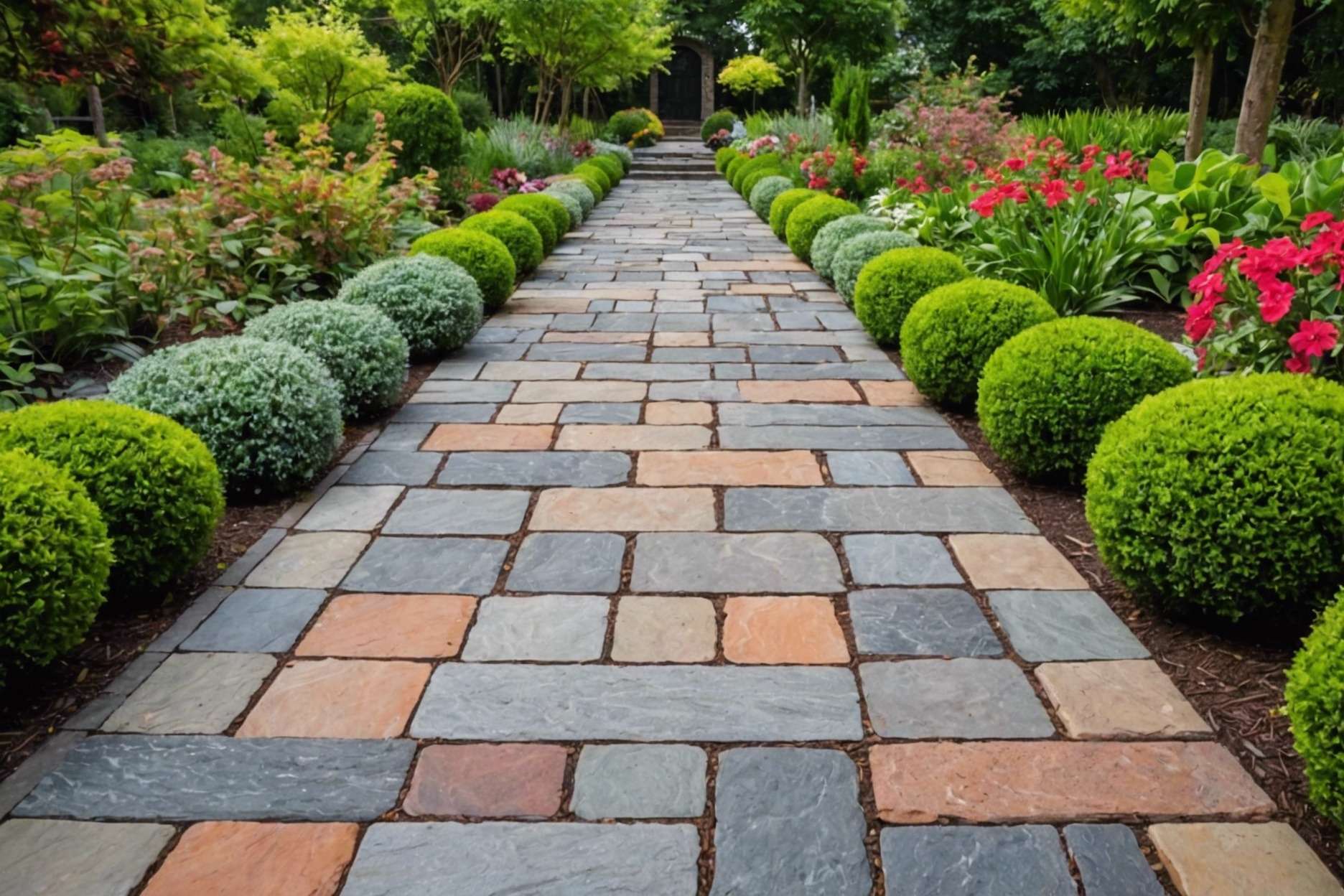
Durability of Granite Paving
Granite paving combines strength and beauty, making it a top choice for both homes and commercial spaces. This natural stone withstands heavy traffic and adverse weather, ensuring durability over time. Its resistance to scratches, stains, and moisture adds to its appeal as a low-maintenance option.
Key advantages of granite paving include:
- Aesthetic Versatility: Available in various colors and finishes, granite enhances outdoor spaces like driveways, walkways, and patios.
- Safety Features: Its slip-resistant surface makes it ideal for pool areas and regions with frequent rain.
- Durability: Granite resists chipping and abrasion, maintaining its appearance under rigorous conditions.
- Heat and Fire Resistance: Suitable for environments exposed to high temperatures, such as near barbecues or fireplaces.
Installation requires careful planning, from selecting the right base to laying the slabs and sealing the gaps with mortar or grout. Although granite is heavier and may cost more upfront, its longevity and minimal upkeep balance the initial investment.
For maintenance, regular cleaning with mild detergents is recommended; harsh chemicals should be avoided to preserve the stone’s natural look. Applying a penetrating seal can further protect against extreme weather and stains.
Durability of Sandstone Paving
Sandstone paving offers a unique aesthetic for outdoor spaces but varies in durability. Here are key points to consider:
- Weathering and Erosion: Sandstone is more porous than other materials like granite. This means it absorbs water, which can lead to faster erosion, especially in wet climates.
- Environmental Performance: In areas with less rainfall and milder conditions, sandstone can last longer and maintain its color and integrity.
- Care and Maintenance: Regular sealing and proper drainage are important to extend the life of sandstone paving, protecting it against moisture and freeze-thaw cycles.
Understanding these factors helps in choosing the right material for your paving needs, ensuring both beauty and longevity.
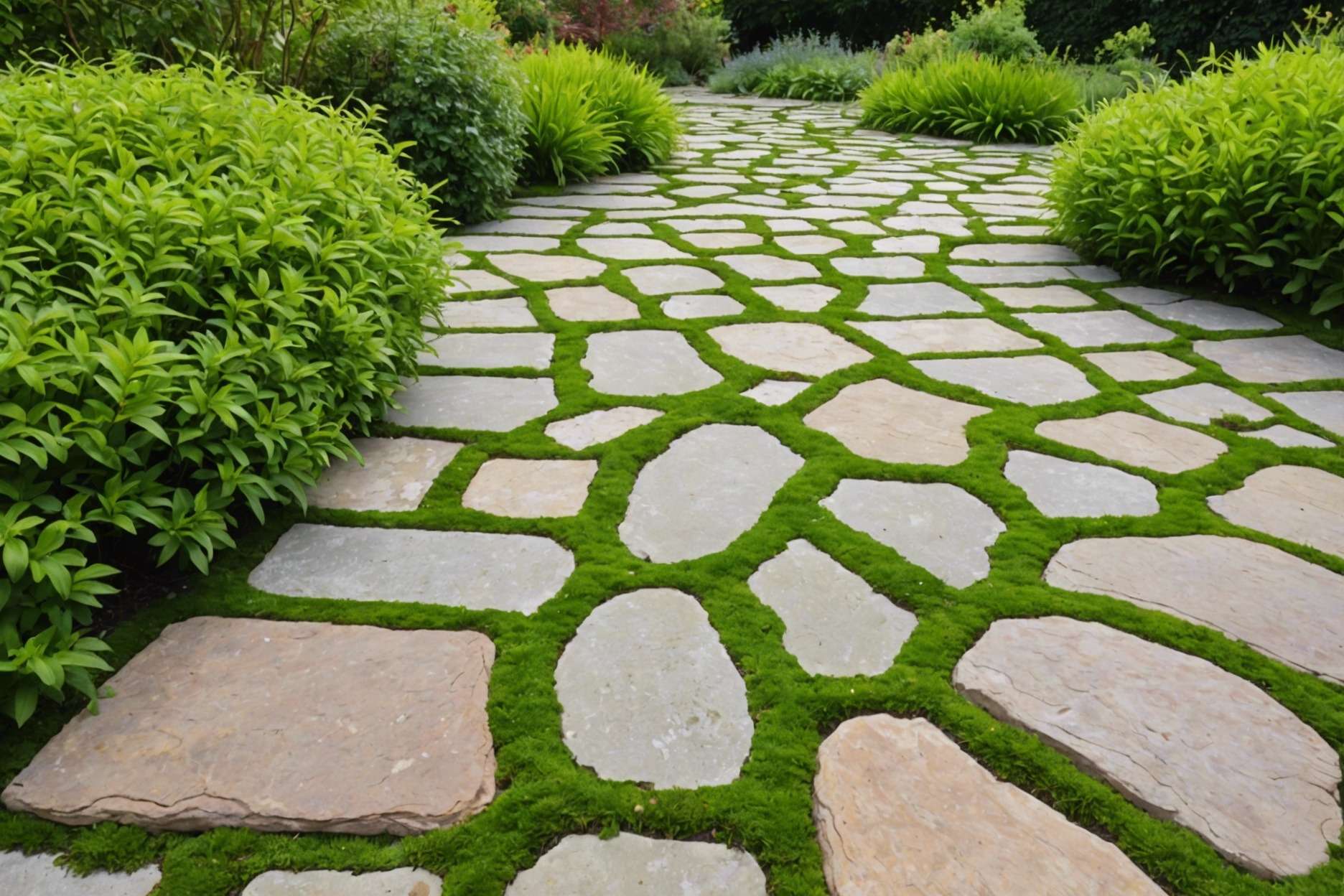
Comparative Analysis: Granite vs Sandstone for High-Traffic Areas
When selecting paving materials for high-traffic areas, both granite and sandstone have distinct features to consider:
- Granite:
- Highly durable and resists scratching and chipping.
- Low maintenance requirements.
- Available in various colors and patterns, suitable for diverse design needs.
- Ideal for both indoor and outdoor applications like countertops, flooring, and facades. Learn more about our services.
- Sandstone:
- Offers a natural, earthy aesthetic with a grainy texture.
- Available in warm, earthy colors but requires regular sealing.
- Less dense and more porous, needing more maintenance, especially in high-traffic areas.
- Commonly used for outdoor applications such as paving and garden paths. Explore our paving solutions.
Both materials have their advantages depending on the project’s specific needs like location, style, and maintenance expectations. Granite, with its robust properties, often comes at a higher cost but provides longevity and variety in appearance. Sandstone, while offering a classic look, may require more upkeep to maintain its condition in busy areas.
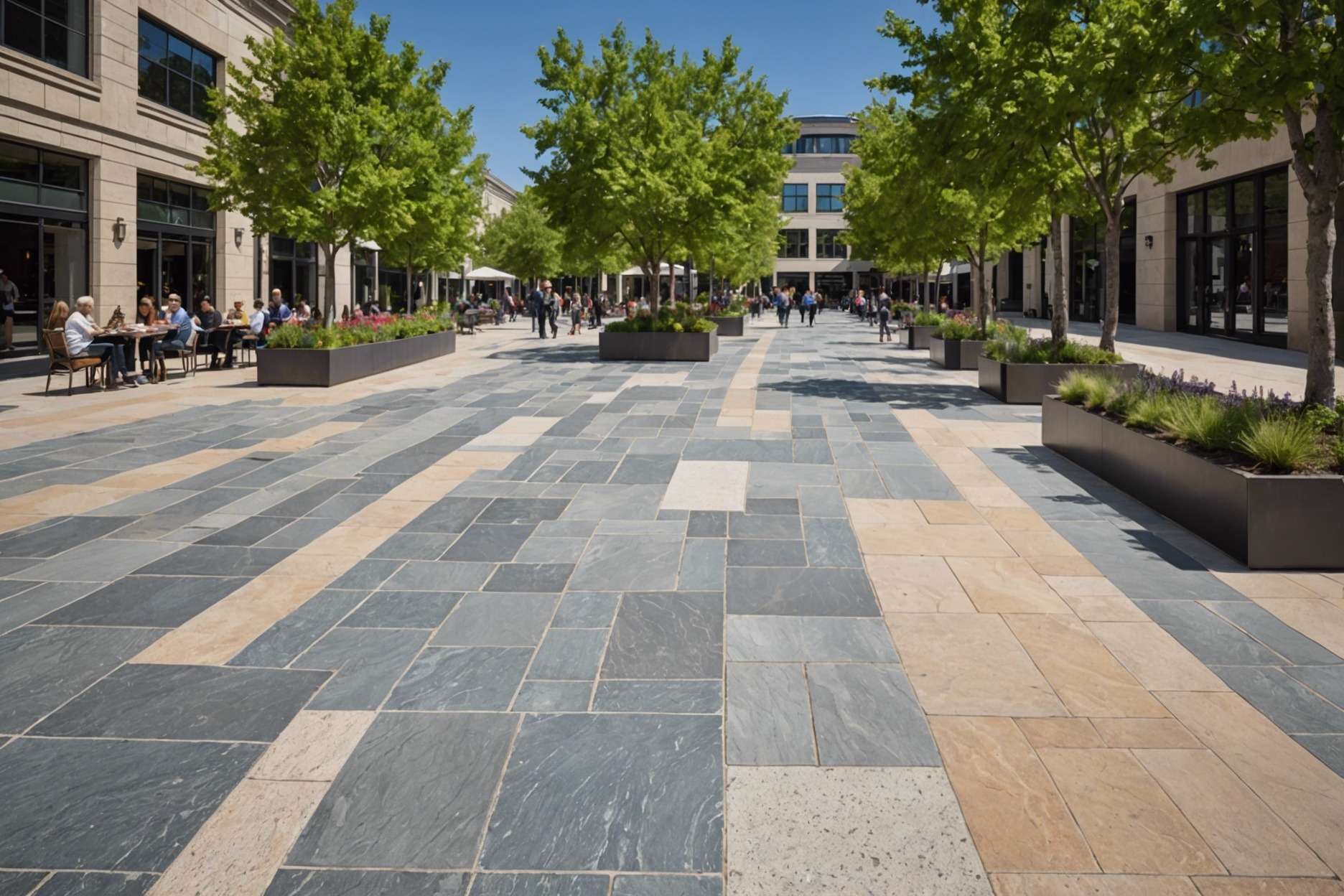
FAQ
What are the primary benefits of using granite for paving?
Granite paving combines strength and aesthetic versatility, making it a top choice for high-traffic areas in both homes and commercial spaces. It is known for its durability, resistance to scratches, stains, and moisture, and has a slip-resistant surface which enhances safety. Additionally, granite is available in various colors and finishes, and it offers heat and fire resistance, making it suitable for areas exposed to high temperatures.
How does sandstone paving perform in different climates?
Sandstone’s durability can vary significantly based on the climate. Being more porous than granite, it absorbs more water, which can lead to quicker erosion, particularly in wet climates. However, in areas with less rainfall and milder conditions, sandstone can maintain its color and integrity for a longer duration. Regular sealing and proper drainage are crucial for extending the lifespan of sandstone paving in various environmental conditions.
What are the maintenance requirements for granite paving?
For maintaining granite paving, regular cleaning with mild detergents is recommended to preserve its natural appearance. It is advisable to avoid harsh chemicals. To further protect the stone from extreme weather and stains, applying a penetrating seal is recommended. These maintenance practices help in retaining the aesthetic and functional qualities of granite paving for a long time.
Can sandstone be used in high-traffic areas?
Sandstone, while offering a natural and earthy aesthetic with a variety of colors, is less dense and more porous compared to granite, making it less ideal for high-traffic areas unless it is regularly sealed and well maintained. It requires more maintenance to preserve its condition and is generally more suitable for lower-traffic outdoor applications such as garden paths rather than high-traffic areas.
Which paving material is more environmentally friendly, granite or sandstone?
Both granite and sandstone are environmentally friendly materials due to their natural origins and minimal processing, which reduces overall energy consumption associated with their production. They both maintain their quality over time, demanding minimal upkeep, which helps in reducing the environmental impact associated with frequent replacements or repairs. The choice between the two often depends on specific project needs and aesthetic preferences.
